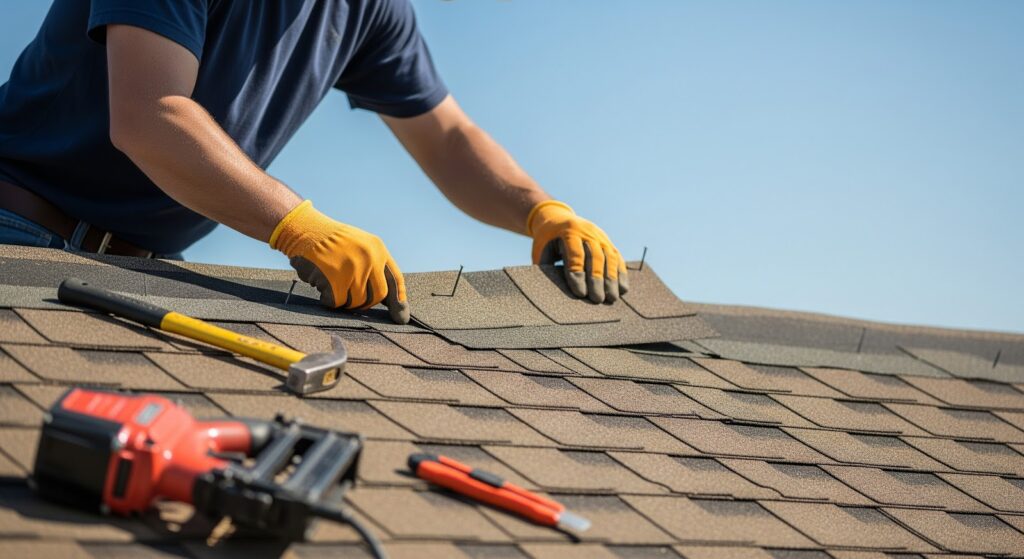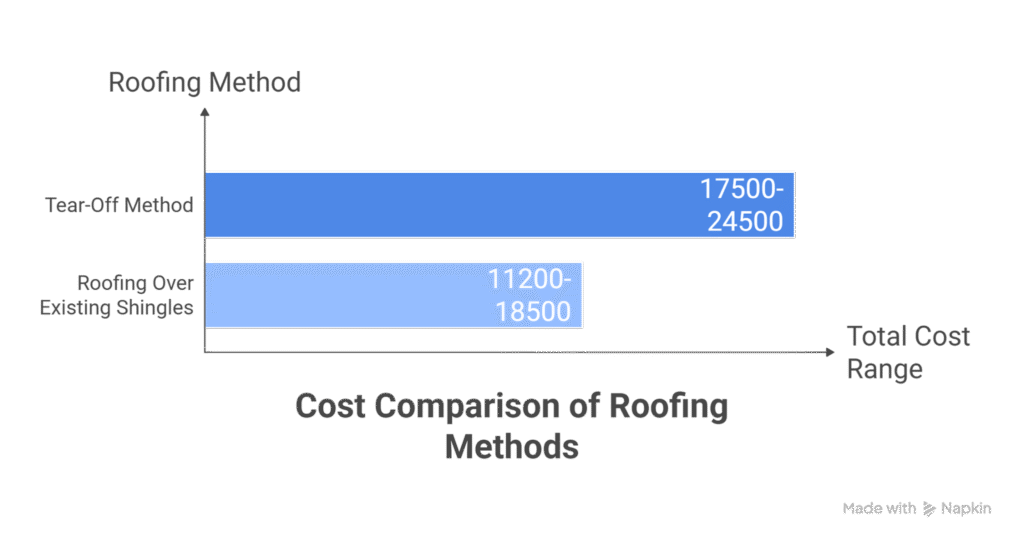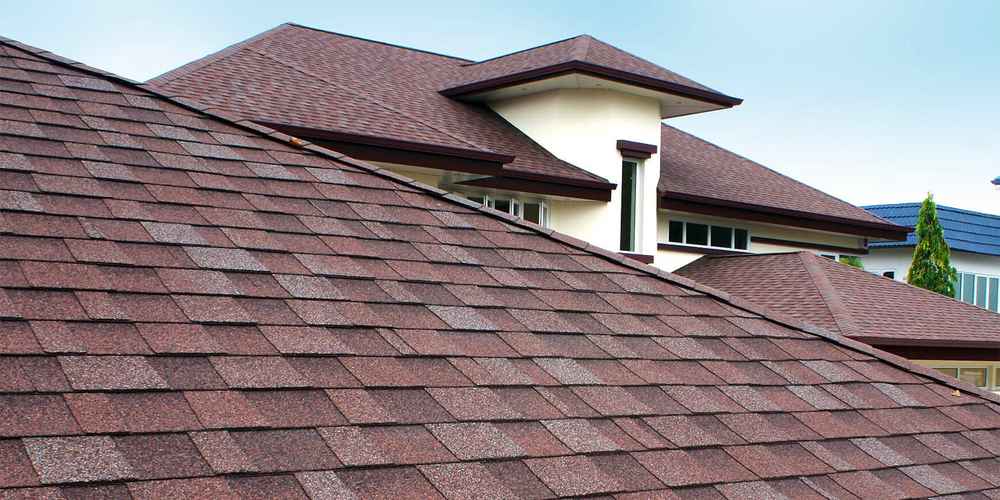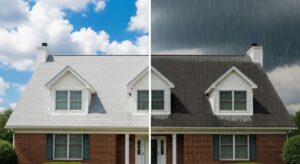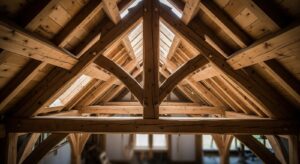STOP! Before you sign that expensive roof replacement contract, here’s a secret that could save you thousands. It’s not some magical shortcut—it’s a smart, legal, code-compliant technique that’s been used for years to save homeowners up to 30% on their roofing projects. It’s called roofing over existing shingles.
Why You Should Know About Shingling Over Old Shingles
Most homeowners assume the only way to replace a roof is to rip off the old shingles. But what if I told you that shingling a roof over old shingles could be a viable option? Not only does it save you money, but it’s also approved by building codes in many areas.
Let’s dive into how to install shingles over existing shingles and how you can take advantage of this smart roofing strategy.
Can You Shingle Over Existing Shingles?
Before we get into the steps, let’s answer a critical question: Can you shingle over shingles?
Yes, you can in many cases. This method of re-roofing over existing shingles is allowed by most local building codes, but it comes with some restrictions.
To put it simply, roofing over existing shingles is acceptable when:
- One layer of shingles already exists on the roof.
- The roof deck is in good condition (no major damage or sagging).
- The home is located in an area where local building codes allow it.
If your roof passes these basic checks, you’re ready to move forward with installing new shingles on top of the old ones.
The Cost Savings: Why Roofing Over Existing Shingles Makes Sense
When you choose to shingle over existing shingles, you save significantly in labor costs, disposal fees, and material costs. Let’s break it down.
Cost Comparison Table
Roofing Method | Materials | Labor Costs | Disposal Fees | Total Cost |
Tear-Off Method | $8,000–$12,000 | $8,000–$10,000 | $1,500–$2,500 | $17,500–$24,500 |
Roofing Over Existing Shingles | $8,000–$12,000 | $4,000–$6,000 | $200–$500 | $11,200–$18,500 |
Total Savings: By opting for the re-shingle roof over old shingles method, you can save between $3,000 and $6,000 on an average-sized home.
How to Install Shingles Over Existing Roof: Step-by-Step Guide
So, how do you go about putting shingles over existing shingles? It’s not just about placing a layer of new shingles on top. There are specific steps to follow to ensure the roof is properly installed, durable, and safe.
Phase 1: Preparation
- Check the Condition of the Old Roof:
- Inspect the shingles for any curling, cracking, or missing shingles. If there’s extensive damage, the overlay method may not be suitable.
- If the shingles are in decent condition, proceed with the overlay.
- Remove Any Debris:
- Sweep away dirt, leaves, and moss to ensure the surface is clean.
- Check for loose nails and secure any that are sticking up.
- Safety First:
- Use a safety harness and sturdy footwear.
- Never work alone; always have someone to help in case of emergencies.
Phase 2: The Installation Process
- Starter Strip:
- The key to how to install shingles over existing roof is the starter strip. This strip helps secure the shingles and prevent water from getting underneath.
- Install a new drip edge along the eaves of the roof before placing the first row of shingles.
- Shingle Installation:
- Start with the first row of shingles, aligning them along the edge.
- Ensure proper overlap: Each shingle should overlap by about 6 inches.
- Use 1½” to 2” nails to ensure that the nails penetrate both layers of shingles and into the roof deck.
- Fastener Technique:
- For the best results, each fastener must penetrate the second layer of shingles and the decking beneath.
- Proper Sealing:
- Make sure the sealant strips on each shingle engage fully to lock the shingles in place and prevent leaks.
- Inspect Flashing:
- Ensure the flashing around vents, chimneys, and valleys are properly integrated.
Phase 3: Quality Control
Before calling it done, ensure the following:
- Every nail has penetrated both layers.
- There are no exposed fasteners.
- The roof has a professional appearance.
- Flashing is well-integrated.
While this guide focuses on the method of shingling over an existing roof, the materials you choose for the new layer are equally important. Your choice of shingle will affect the final appearance, longevity, and overall weight on your roof structure. To learn about the different options available, from standard asphalt to architectural shingles and more, you can explore this Ultimate Guide to Residential Roofing Materials.
When is Roofing Over Existing Shingles NOT a Good Idea?
Although shingling over existing shingles can be a cost-effective option, there are situations where it’s not recommended:
- Multiple Shingle Layers: If you already have two layers of shingles, most local building codes prohibit additional overlays. You’ll need a full tear-off.
- Severe Structural Damage: If your roof has sagging or water damage, an overlay won’t address these issues, and you’ll need a full roof replacement.
- Inadequate Support: Some roofs, especially older homes or homes in high-wind areas, may not be able to support a second layer of shingles.
Benefits of Shingling Over Existing Shingles
Cost Savings
- You save on disposal fees (which can be as much as $2,500 with a tear-off).
- You save on labor costs, reducing the time needed to install the roof.
- No need to tear off old shingles and risk damaging the underlying structure.
Quick Installation
- The job can be completed in 3–4 days, compared to a traditional tear-off that might take a week or more.
- Less disruption to your home life.
Minimal Environmental Impact
- By choosing to put roof shingles over existing shingles, you help reduce the amount of waste going to the landfill. It’s a more sustainable roofing option.
Frequently Asked Questions (FAQs)
1. Can You Shingle Over Existing Shingles?
Yes, roofing over existing shingles is allowed by building codes in many areas, provided there is only one layer of shingles and the roof is in good condition.
2. How Much Can I Save by Roofing Over Existing Shingles?
You can save 20–30% compared to a full tear-off roof replacement. This amounts to $3,000–$6,000 on average.
3. How Long Will a Roof Overlay Last?
An overlay roof can last 20–25 years, just like a traditional roof replacement, with proper installation and regular maintenance.
4. Can You Put New Shingles on Top of Old Shingles Twice?
Most building codes only allow two layers of shingles. If your roof already has two layers, you will need to do a full tear-off for the next replacement.
5. Can You Roof Over Old Shingles in High-Wind Areas?
In areas with high winds or hurricanes, local building codes may prohibit roofing over existing shingles. Always check with a professional contractor or local building department.
Conclusion: Make the Smart Choice for Your Roof
Whether you’re asking can you roof over existing shingles, or how to put shingles over existing shingles, this method could be the money-saving solution you’ve been looking for.
Shingling over existing shingles isn’t for every home, but if your roof qualifies, you can save thousands without compromising quality.
Next Steps:
- Check your roof’s condition and ensure it meets the requirements.
- Consult with a professional contractor experienced in this method.
- Get multiple quotes to compare prices for overlay vs. tear-off methods.
- Verify your local building codes and insurance policies.
External Resources for Roofing Over Existing Shingles:
- International Code Council – Residential Roofing Codes
- Roofing Manufacturer Guidelines for Overlay Installations
- How to Shingle a Roof Over Existing Shingles – Detailed Guide
By following these steps and guidelines, you’ll be able to decide whether shingling over existing shingles is the best roofing option for your home.

